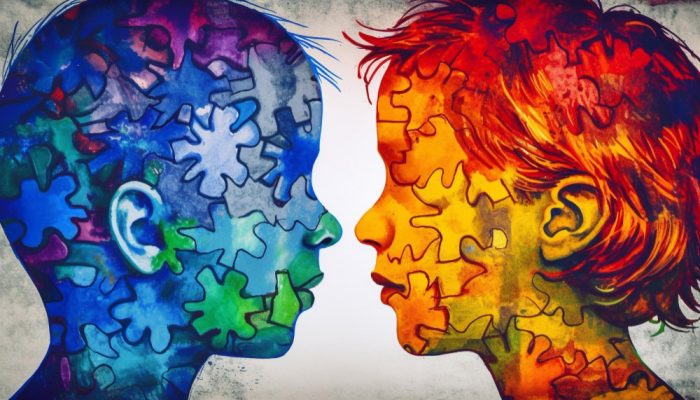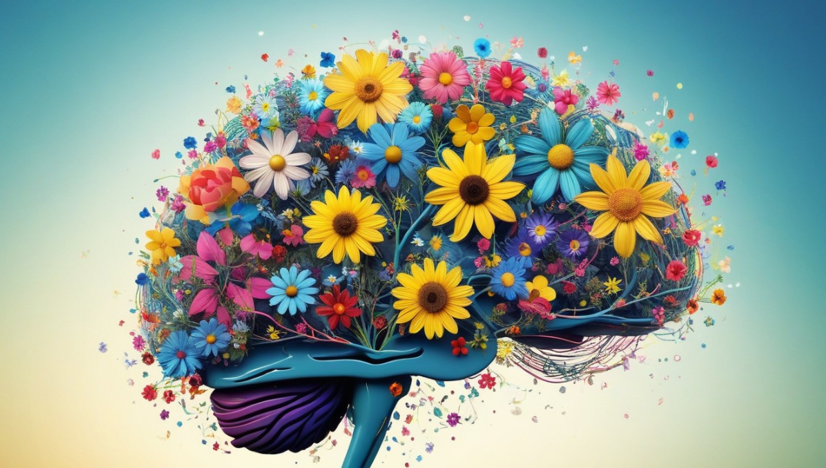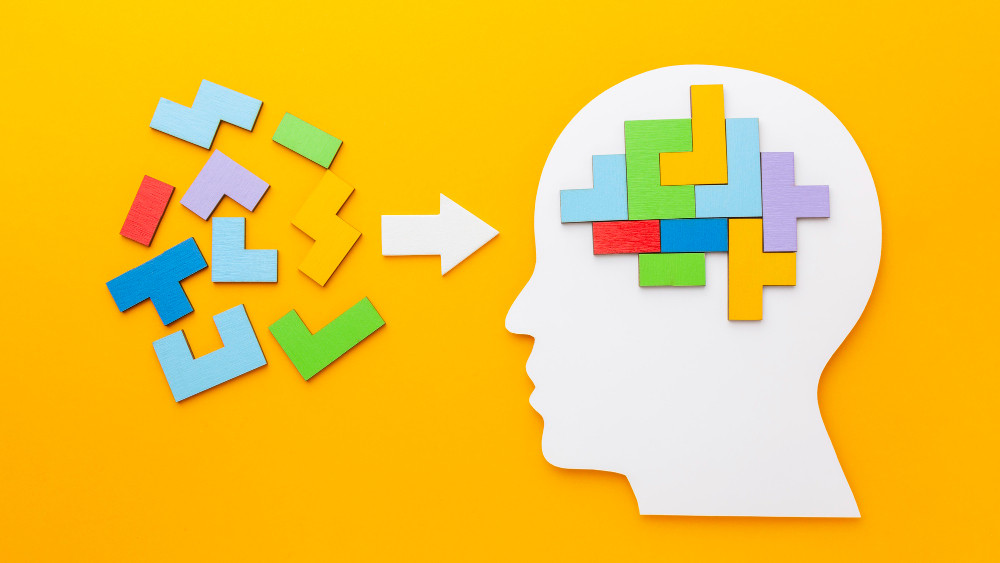Neurodivergent: Understanding the New Concept of Neurodiversity

@ vecstock / Freepik
Have you ever felt different enough to go and search for the neurodiversity symptoms? Welcome to the club!
We can’t help but think about what it’s like to see the world from such a unique perspective. But trying to understand neurodiversity takes a lot of research. The out-of-the-box way of thinking makes every neurodivergent person a world on its own. But there are some universal norms in their world too. There is so much being left out but we will show you more in the years to come. Here is what we found out so far!
A Short History of the Neurodiversity Movement
The concept of neurodiversity asserts that individuals experience and engage with the world in diverse ways. It emphasizes that there isn’t a singular “right” way of thinking, learning, or behaving, and it reframes differences as strengths rather than deficits.
The term “neurodiversity” was coined by Australian sociologist Judy Singer in 1998. Singer used the term to advocate for the recognition and acceptance of neurological differences, such as autism, ADHD, and dyslexia, as natural variations of the human brain rather than as disorders or disabilities. This concept laid the foundation for the neurodiversity movement.

By 2010, companies like SAP, Microsoft, and Hewlett Packard Enterprise initiated neurodiversity hiring initiatives, recognizing the unique strengths neurodivergent individuals bring to the workplace. In 2015, the UN acknowledged the rights of neurodivergent individuals with the Convention on the Rights of Persons with Disabilities. The movement has expanded into education, healthcare, and social justice, promoting inclusivity and challenging societal norms and stereotypes. Neurodiversity advocates work towards celebrating, rather than stigmatizing, neurological differences.
According to VeryWellMind the exact number of neurodivergent individuals is unknown, but the prevalence of conditions associated with neurodiversity offers insights into its commonality.
- The Centers for Disease Control and Prevention (CDC) estimates that 1 in 44 eight-year-olds (2.3% of children) has autism spectrum disorder, with a 4.2 times higher prevalence in boys due to a lack of understanding in minoritized genders.
- Around 9.4% of all children are diagnosed with ADHD before the age of 18, according to the CDC.
- Dyslexia affects 20% of the population, as reported by the Yale Center for Dyslexia and Creativity.

Neurodivergent vs. Neurotypical
The term “neurodivergent” contrasts with “neurotypical,” representing those with more typical brain development. It acknowledges the diversity in how brains evolve, rejecting a one-size-fits-all standard.
Neurotypical individuals possess brain functions, behaviors, and processing considered standard or typical. Often, they may be unaware of their neurotypical status, as the subject rarely comes to their attention. These individuals typically meet developmental and behavioral milestones at conventional times and ages. This allows them to navigate life without questioning whether their brains function similarly to others.
On the other hand, neurodivergence describes individuals whose brains function differently in one or more ways than the standard or typical. The manifestations of neurodivergence vary, ranging from subtle differences that go unnoticed by most to more conspicuous variations that result in behavior outside societal norms. In the following sections, we will explore the most common types of neurodivergence and how they manifest. In other words, neurodivergent is considered a person whose behavior and ways of thinking and learning are different from a typical person, now referred to as neurotypical.
Neurodivergence Types
The concept of neurodivergence has expanded to encompass various consistent ways in which some brains function differently than others. Neurodivergence includes individuals with conditions such as autism spectrum disorder (ASD), ADHD, dyslexia, and others, but it also encompasses those without specific medical diagnoses. It challenges the traditional medical approach to defining normality.
1. Autism
Previously, subtypes like Asperger’s and pervasive developmental disorder (PDD) existed, but it was disapproved by the neurodivergent community. The rejection of the term “Asperger’s” within the autistic community stems from its association with a Nazi scientist and eugenics.
Autism is now classified as a “spectrum disorder,” and exhibits a range of traits, presentations, and support needs among autistic individuals. Autistic conditions may involve challenges in socializing, repetitive behaviors, and speech difficulties. This led some to communicate through alternative means like writing, typing, or sign language.

2. ADHD
Attention deficit hyperactivity disorder (ADHD) is characterized by executive function dysregulation, leading to difficulties in managing thoughts, attention, behaviors, and emotions. Individuals with ADHD may struggle with organization, experience restlessness, appear disinterested, or exhibit inappropriate behavior during intense emotional moments. Notably, their out-of-the-box thinking often makes them adept problem solvers, energetic, “fun,” and sensitive to others.
3. Dyslexia
Dyslexia, a form of neurodivergence related to speaking, reading, and writing, goes beyond the common association with misreading or rearranging words. It may involve confusion with specific letters, challenges in organizing sentences, difficulty acquiring vocabulary or pronouncing words, and struggles in following directions. People with dyslexia often excel as big-picture thinkers, showcasing strong visual processing skills, spatial awareness, and creativity.
4. Other Types
Additional forms of neurodivergence encompass Tourette’s, dyspraxia, synesthesia, dyscalculia, Down syndrome, epilepsy, and chronic mental health conditions such as bipolar disorder, obsessive-compulsive disorder, borderline personality disorder, anxiety, and depression.
Each of these conditions represents a unique way in which individuals’ brains function differently from the perceived norm. This highlights the richness and diversity of the human cognitive experience.
Neurodiversity in the Workplace
In workplaces, fostering neurodiversity involves understanding and accommodating differences. Stigma and lack of awareness can exclude neurodivergent individuals. Creating neurodiversity-friendly workplaces requires small adjustments, such as accommodating sensory needs and promoting clear communication. Employers should provide support tailored to individual preferences, needs, and goals, promoting inclusivity, kindness, and patience.
Doctor Alecia M. Santuzzi suggests that embracing the concept of neurodiversity in the modern workplace could alleviate the stigma and stress experienced by neurodivergent workers. Many individuals refrain from seeking assistance due to the fear of judgment from colleagues or supervisors, creating an unfair dynamic.

Individuals with neurodivergent characteristics often invest significant effort in adapting to their work environment. This may involve managing social impressions and devising strategies to minimize distractions. Unfortunately, this additional effort can have adverse effects on both work performance and the physical and mental well-being of these individuals, notes Santuzzi.
For employers looking to create a more inclusive work environment, Santuzzi has a few tips:
- Diversify Job Roles
Tailor job roles to accommodate various types of workers, recognizing and valuing diverse skills and perspectives. - Flexible Work Arrangements
Allow for diverse work schedules and environments, acknowledging that different individuals thrive in different settings. - Adopt Flexible Work Design
Create a flexible work design that encompasses when, where, and how work happens. Foster an environment that welcomes individuals with diverse needs and working styles.
By implementing these adjustments, employers can contribute to a workplace culture that supports neurodiversity, minimizing stigma and promoting the well-being of all employees.
Success is entirely achievable for neurodivergent individuals, as demonstrated by accomplished figures in various fields. Understanding and supporting neurodivergent individuals involves active listening, adapting communication methods, avoiding value-based labels, and treating everyone with respect.
Seeking Guidance
If someone suspects neurodivergence, seeking guidance from healthcare providers is the first step to understanding and addressing potential differences in brain function. While neurodivergence is not preventable, treatable, or curable, management strategies and accommodations can enhance the quality of life for neurodivergent individuals.

Determining if you are neurodivergent involves considering factors like a formal diagnosis, self-reflection, and professional guidance. If you resonate strongly with neurodivergent descriptors but haven’t been formally diagnosed, consulting a healthcare professional can offer insights. Educating yourself about neurodivergent conditions, connecting with relevant communities, and acknowledging self-diagnosis as valid are important steps. It’s also worth recognizing that neurodivergence may become apparent in adulthood, explaining past challenges. A formal diagnosis can provide a deeper understanding of cognitive processes, while those who don’t identify strongly with neurodivergent traits may fall within the neurotypical spectrum.
As society’s understanding of brain function advances, the treatment of neurodivergent individuals is undergoing a positive transformation. Special education is evolving to better cater to the diverse learning needs of neurodivergent individuals. Embracing the commonality of diverse cognitive processes enables us to create accommodations that support individuals in learning, functioning, and thriving in society.
Do you still think you are not neurotypical? Please let us know!
You might also want to read: The Hidden Gifts of ADHD – Uncovering the Truth


